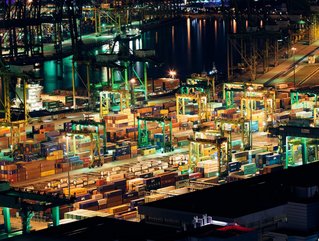More intelligent supply chains through advanced analytics

Supply chains lend themselves well to business intelligence (BI), as it can enhance processes such as stock optimisation, demand forecasting and distribution networks. However, BI alone can only offer useful insight when it is applied to historical, non-complex data. When it's presented with more sophisticated data, BI struggles to generate valuable intel.
At the same time, siloed approaches to BI, with data and applications specifically dedicated to logistics, production and procurement, make it difficult to utilise data from both internal and external sources. Without this, it can be extremely difficult for manufacturers to have a complete overview of their supply chain.
In today’s highly dynamic market, manufacturers must combine BI with advanced data analytics – to drive full value from their data.
Data versus demand
Today, manufacturers need accurate, real-time information to manage their complex supply chains. Over time, the supply chain has come to rely on varied sources of data, including the addition of new suppliers to the market, the geolocation of production and distribution, access to raw materials and resources and much more.
Not to mention the usual demand-related forces that impact supply chains. If global demand suddenly changes, the impact must be analysed, processed, and actioned rapidly to enable supply chains to adapt to external forces and remain resilient. For example, the recent energy crisis and rise in inflation have created market turbulence and had a huge impact on customer demand.
With some many different sources of data, often residing if disparate locations, it can slow down supply chain decision making. Manufacturers need solutions that can continuously capture and analyse data from a wide variety of sources and drive value. This enables them to act quickly and adjust production levels, assess current stock, and make changes to distribution processes to contain costs.
Navigating complexity with real-time analytics
Advanced analytics offers a number of supply chain advantages, particularly when interpreting an ever-expanding pool of data. At the same time organisations must be able to analyse this data as soon as it becomes available, otherwise it will start to lose value. Therefore, companies must be able to access, analyse and drive actionable insight in real-time, regardless of whether it’s from structured or unstructured data.
By consolidating their data into a data lakehouse, which combines the benefits of a traditional data warehouse with a data lake, manufacturers can democratise the sharing of information. This gives both BI teams and data scientists access to data and enables them to extract value to drive supply chain efficiencies.
In addition, technology innovation is helping organisations to gain more accurate data to make faster decisions. For example, IoT is allowing manufacturers to harness data remotely from anywhere in the supply chain. By feeding this intel into a data lakehouse and removing data silos, ML and AI algorithms can process these huge sets of rich data, generating highly accurate results – that can be used to navigate even the most complex situations.
When it comes to use cases for advanced data analytics in the supply chain, logistics optimisation is a great use case. Depending on routes, traffic, weather, and other parameters such as load capacity, changes might need to be made to logistics processes.
This has a huge impact on making supply chains more resilient as companies can not only react to changes faster, but proactively plan for variations, which ultimately helps to reduce delivery times.
A data-driven supply chain
If organisations are to continue to drive supply chain efficiency and optimise costs, they need to stay ahead of the data curve. This means removing data siloes and enabling supply chain teams to drive value from real-time data, no matter where it resides. At a time where customer expectations are rising, companies capable of utilising supply chain data in an intelligent and rapid manner will come out ahead.
Fabio Pascali is Regional Vice President at Cloudera






